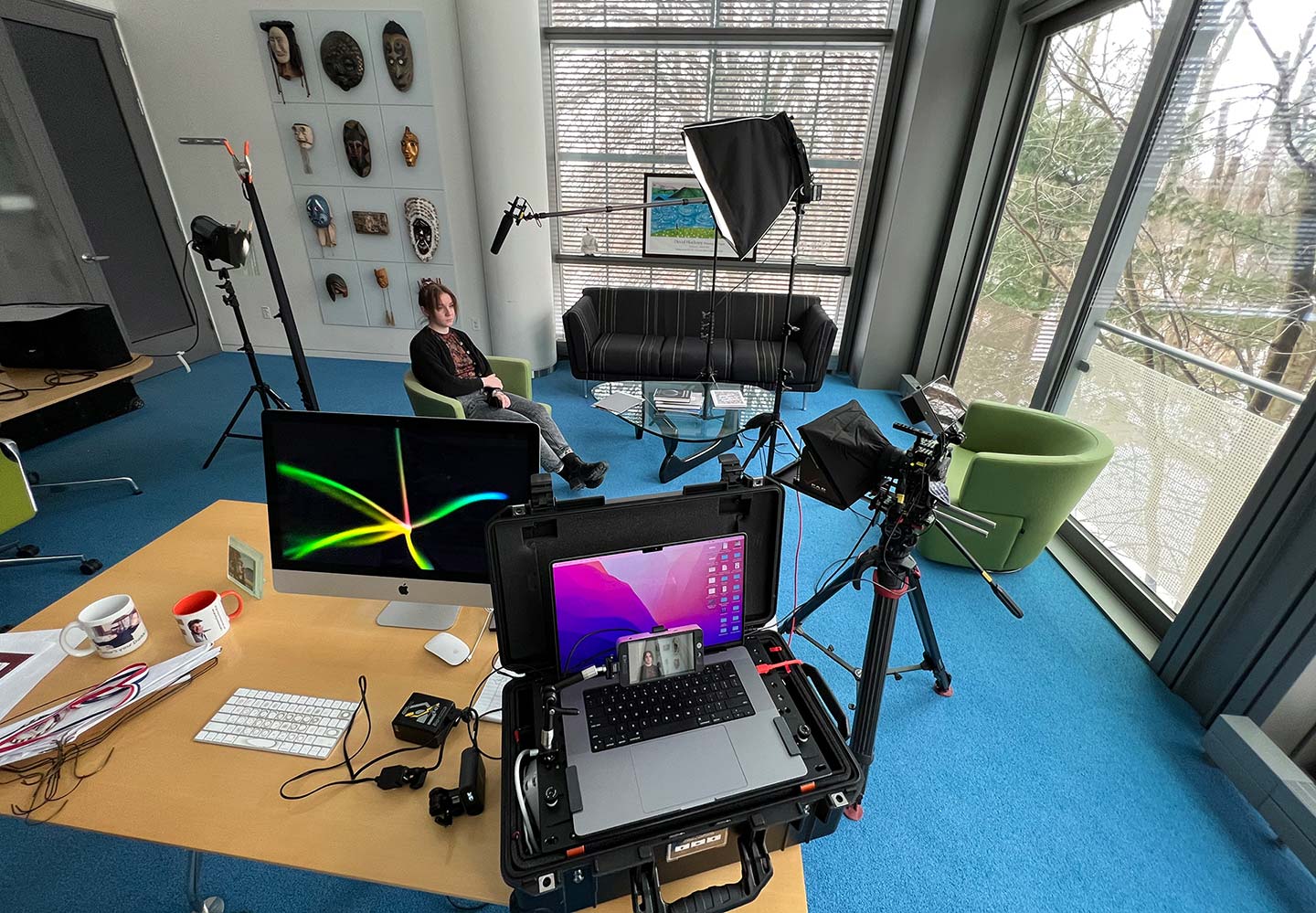For Princeton Public Lectures, Princeton Talks; Nobel laureate David MacMillan on what makes a scientist. A teaser from his talk about his path to and passion for organic chemistry.
Nobel laureate David MacMillan on what makes a scientist. On YouTube and Vimeo.
For the full talk please visit the Princeton Talks website.
Production

This project was filmed with two Canon C70 cinema cameras and an interrotron setup was used so that the subject would talk directly into the camera. Lighting consisted of one Litepanels Astra 6x in a DoP Softbox Big as the key, a Litepanels Sola 4+ fresnel for the backlight, and a large Flexfill Negative Fill disc.
If you are not familiar with an interrotron (as in interrogate), it was first developed by filmmaker Errol Morris as a means of getting subjects to speak into the camera lens, not slightly off-camera as is traditionally done when an interviewer sits adjacent to the camera.

Morris created the effect by using two cameras and two teleprompters. One each for the interviewer and the interviewee. Instead of a script appearing in each teleprompter, the image of each participant is sent to the other. Thus, the interviewer and interviewee see each other but only through the prompter screens which are reflected in front of each camera lens via a 45° beamsplitter mirror. In Morris’ case, he usually sits in a different room from his subject.
For us, we create a similar effect within the same room by blocking the line of sight between the interviewer and interviewee and we simplify things a bit. We only use one teleprompter, not two, and it is for the interviewee to see the interviewer. On the other end we use a laptop and a small monitor. The laptop’s camera feeds an image of the interviewer to the teleprompter. That’s what the interviewee sees. And the main camera, which is filming the interviewee, sends its image to the interviewer’s monitor.

It’s both simple and a bit complicated at the same time. That said, we’ve done it on a number of projects, on two-camera shoots, and with only two crew members. So, once you get the hang of it, it’s a pretty effective tool to have at your disposal.
